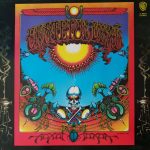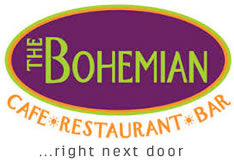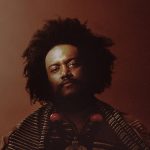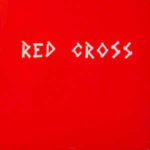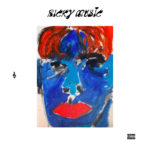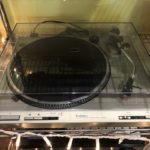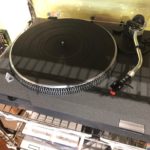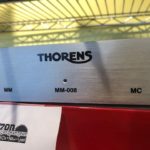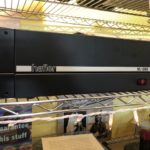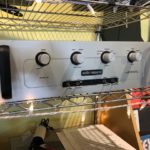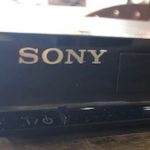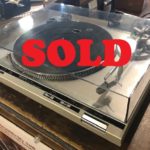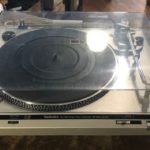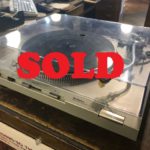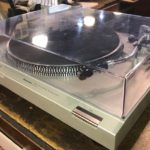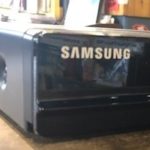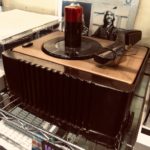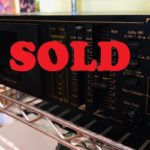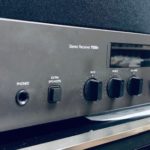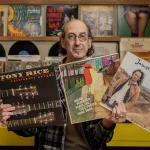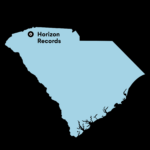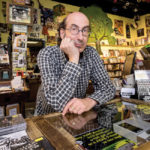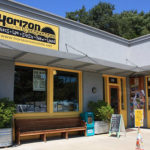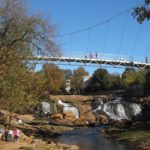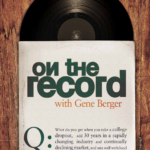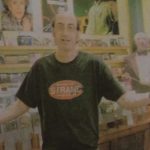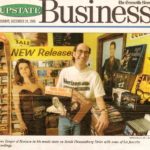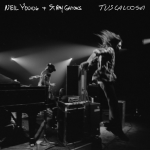
NEIL YOUNG & THE STRAY GATORS, Tuscaloosa (CD/LP)
Neil Young can be irascible at the best of times, but things were looking particularly dour when he and his band The Stray Gators rolled into Tuscaloosa, Alabama, in February 1973. Though his 1972 release Harvest was the top-selling album in America that year, Young was not in a celebratory mood. He was shaken by the recent death of his friend and ex-bandmate Danny Whitten, who had a fatal overdose the same night that Young dismissed him from rehearsals for the Harvest tour, which itself was famously fraught; Young later complained about “money hassles,” and the shows were so shaky at one point that he asked David Crosby and Graham Nash to come lend a hand on backing vocals. Young was also unsettled enough by his growing solo success that he sought to undercut it by loading concerts with new material that audiences wouldn’t have heard before, rather than trotting out the familiar songs that have come to define his career. Maybe that accounts for the arrival in October 1973 of Time Fades Away, a piecemeal live album of previously unreleased songs, instead of the hit-laden setlist from his Feb. 5 show at the University of Alabama. Young kept that recording locked away for 46 years before selecting it for his ongoing Archives series. Far better late than never: though Tuscaloosa doesn’t include the full show, the album captures Young and The Stray Gators, his band between 1971-73, in peak form. The sound quality is startlingly clear and the band is locked in on a track list that features five of the 10 songs from Harvest, a couple of tunes from earlier albums and a handful of then-new songs. The musicians—Tim Drummond on bass, Kenny Buttrey on drums, Jack Nitzsche on piano and Ben Keith on steel guitar—play with practiced ease that belies the turbulent context of the tour. They sound laid-back and comfortable as they slide in unobtrusively behind Young in a way that lets him carry the show without doing all the heavy lifting himself. Buttrey creates an unfussy framework with the straightforward beat on “Old Man” while Keith adds ornamentation with haunting steel guitar licks that glisten alongside Young’s distinctive, yawping tenor. Young is just as good alone on “After the Gold Rush,” the second of two solo performances that open Tuscaloosa. He accompanies himself on piano, his voice sounding desolate and full of longing as he pushes up to the very top of his range. Without the horns that adorned the studio version of the song, Young powers through the middle part with a simple, serviceable piano solo. Later, with the band, he cranks up the volume on a strident version of “Alabama,” a pointed song about the state’s troubled racial history. It’s not quite as audacious as the sharper-edged “Southern Man” would have been in the land of the Crimson Tide, but Young doesn’t hold back. His guitar tone is thick and spiky on the brawny riff, while Nitzsche adds a hint of nuance with minor-key piano fills, complemented by wide and a little ragged vocal harmonies on the refrain. Though he has never been known for his stage banter, Young is (comparatively) outgoing and engaging here. He introduces “After the Gold Rush” as “about a dream I had one morning,” and dedicates “Lookout Joe” to American troops returning from Vietnam, where the U.S. had suspended combat operations just a few weeks before. Young prefaces “Heart of Gold” with an anecdote about rejecting an opportunity to license the song for a commercial before telling the crowd, “Don’t clap for this story, because most of it I’m making up and it isn’t true.” That’s not bad shtick for a guy with a fairly pronounced misanthropic streak. Yet his grumpy persona has long contrasted with the more tender elements of his music, which can be intimate and moving when it’s not blaring and terse. Tuscaloosa showcases Young’s full range, which makes it a rare glimpse of a now-iconic performer at a moment when he was working to find a balance between satisfying himself and pleasing his audience.
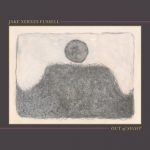
JAKE XERXES FUSSELL, Out Of Sight (CD/LP)
On his third and most finely wrought album yet, guitarist, singer, and master interpreter Fussell is joined for the first time by a full band featuring Nathan Bowles (drums), Casey Toll (bass), Nathan Golub (pedal steel), Libby Rodenbough (violin, vocals), and James Anthony Wallace (piano, organ). An utterly transporting selection of traditional narrative folksongs addressing the troubles and delights of love, work, and wine (i.e., the things that matter), collected from a myriad of obscure sources and deftly metamorphosed, Out of Sight contains, among other moving curiosities, a fishmonger’s cry that sounds like an astral lament (“The River St. Johns”); a cotton mill tune that humorously explores the unknown terrain of death and memory (“Winnsboro Cotton Mill Blues”); and a fishermen’s shanty/gospel song equally concerned with terrestrial boozing and heavenly transcendence (“Drinking of the Wine”).

BOB DYLAN, Rolling Thunder Revue (14xCD; yes, you read that correctly/LP version in-stock soon!)
In late 1975, when Bob Dylan assembled a crew of friends, poets and fellow singer-songwriters for a tour of smaller venues, he was coming off one of the most acclaimed albums of his career, Blood on the Tracks, which was released early in the year after being delayed a few months. As usual, Dylan had moved on by then. By fall of that year, when the first of two Rolling Thunder Revue legs launched, he was ready to scale back in some ways, expand in others. The stages he played were smaller than what he was used to; buzz for the shows was less frantic too, since Dylan announced them with little fanfare. But the concerts often went on for four hours, with artists like Joan Baez, T Bone Burnett, Roger McGuinn and Mick Ronson occasionally taking the spotlight. The Rolling Thunder Revue ended up in two parts: the first half covered Canada and the Northeast U.S.; a spring 1976 run hit other parts of the country. The Rolling Thunder Revue: The 1975 Live Recordings includes rehearsals, five complete Dylan sets from the tour and some of the shows’ more obscure numbers that weren’t performed at every stop — all taken from the superior 1975 dates. The best songs here come from an evening show at the Boston Music Hall in November, including classics like “The Lonesome Death of Hattie Carroll,” “I Shall Be Released” and “Just Like a Woman,” as well as a set-closing cover of Woody Guthrie’s “This Land Is Your Land,” which the ensemble performed every night. In a way, the entire Rolling Thunder Revue was a tribute of sort to Guthrie and other veteran folksingers who influenced Dylan early in his career. The tour’s rambling, freewheeling spirit owes much to the hootenanny ethic that inspired him when he first started out. And the performances sharpened as the tour progressed. That’s when this set gets interesting. Scarlet Rivera’s violin adds new shades and textures to many of the old, familiar songs, and Dylan’s snarling, seething delivery of some of the songs — particular “The Lonesome Death of Hattie Carroll” and the then-new “Hurricane” — recalls the rage of those legendary ’60s shows. By the time the tour wound down in early December — the second-to-last concert, from Montreal, is collected here — Dylan and the band sounded as tight as a relatively loose collective like this could sound.
THE GRATEFUL DEAD, Aoxomoxoa (3xCD/LP)
The Grateful Dead’s 50th anniversary reissue of Aoxomoxoa includes a bonus disc that will make Deadheads drool: A treasure trove of unreleased music taken from a handful of 1969 shows. But the set will also feature two versions of Aoxomoxoa: A newly remastered version of the original 1969 LP and a remastered version of the band-produced mix the Dead released in 1971. The bonus disc boasts live music recorded January 24th to 26th, 1969 at the Avalon Ballroom in San Francisco, (the recordings were among the first live performances recorded to 16-track tape). “In 1969, for their third album, the Grateful Dead eschewed outside producers and created Aoxomoxoa themselves, beginning a run of self-produced albums that would continue until 1977,” said Grateful Dead archivist Dave Lemieux in a statement. “Scrapping the first sessions, which were recorded to eight-track tape, the Dead now had 16 tracks with which to experiment their psychedelic sound, with an album that included entirely Robert Hunter-penned lyrics for the first time.” The bonus disc of live material includes several gems, including two early versions of Aoxomoxoa tracks, “Durpee’s Diamond Blues” and “Doin’ That Rag,” as well as the final live performance of “Clementine,” a song the Dead began playing in 1968 but never released on a studio album.
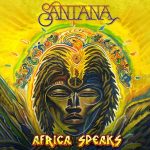
SANTANA, Africa Speaks (CD/LP)
Africa Speaks is an all-new, energy-infused album from Santana that features the soulful vocals of Afro-Latin singer Buika, and was produced by legendary producer Rick Rubin. Santana and his eight-piece band (featuring his wife, Cindy Blackman Santana, on drums), convened at Rubin’s Shangri La Studios in Malibu, and in a joyous and stimulating 10-day period they recorded an astonishing number of tracks, many of them in one take. Inspired by the melodies, sounds and rhythms of Africa, Santana has created a truly memorable and powerful experience that also promises to be one of his most groundbreaking albums yet.
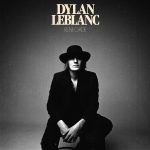
DYLAN LEBLANC, Renegade (CD/LP)
Dylan LeBlanc’s 2016 release, Cautionary Tale, swept through like a smooth, cool breeze. His singular vocals and atmospheric rootsy arrangements felt like a hazy ’70s dream, soft and groovy. A follow-up was highly anticipated, and with Renegade, we are not disappointed. LeBlanc’s first album with ATO Records, and with production help from Nashville royalty Dave Cobb, Renegade shows us an artist matured. Stronger, more dynamic vocals, intelligent and rich narratives, and bigger, more electric arrangements are just some of the ways LeBlanc is letting us know he’s grown up a bit in the last few years. One of the most noticeable aspects of LeBlanc’s evolution as an artist, though, is his confidence, which feels elevated almost to the point of swagger on Renegade. This suits him. While his natural vocal register is still on the softer side, we hear a complete lack of fear or hesitation in his singing this time around. Higher notes and the occasional primal howl or growl make his performances across Renegade particularly impressive. And with his longtime backing band The Pollies joining him in the studio, the instrumental melodies are especially shiny and lush. The album’s standout moment is the perfect hybrid of all these elements. “Lone Rider” fills every last inch of whatever room you play it in, with gorgeous guitars, a hint of a high-pitched organ, and LeBlanc’s world-weary tale of heartbreak and solitude. It’s a road song meant for a long, lonesome journey. Elsewhere on Renegade, LeBlanc gives us compelling stories he’s compiled from his travels, set to more of The Pollies’ vibrant pop melodies. There’s a prostitute’s quest for self-worth in the stunning “Domino,” and the larger-than-life harmonies of “I See It in Your Eyes.” On the rollicking “Bang Bang Bang,” he relays a tale of gun violence set in New Orleans in the 1960s, and on the album’s title track, he gives us a taste of ’80s rock as a background for stories of living fast and loose. With Renegade, LeBlanc is fully out of his shell, discovering the range that was there all along, waiting to be found.
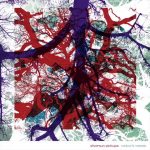
SILVERSUN PICKUPS, Widow’s Weeds (CD/LP)
These days, Silversun Pickups songs are like the aural equivalent of Facebook Memories — moments that are pleasant enough to think about when prompted, but not always potent enough to remember on their own. That’s not really the L.A. alt-rockers’ fault. They do what they set out to do very well. But in an age where there isn’t much of a defined rock mainstream any more, the idea of producing music that rebels against it seems a bit outdated. Nevertheless, Silversun Pickups’ fifth album “Widow’s Weeds” (New Machine/Warner) is a well-built collection of alternative rock, defined by singer Brian Aubert’s distinctive voice and the muscular bass lines of Nikki Monninger. The current single “It Doesn’t Matter Why” sets the stage for the album, its intense mix of driving guitars and soaring strings calling to mind the loud-soft-loud dynamics that made producer Butch Vig famous in alternative’s Nirvana-driven heyday. But all that Vig-heightened drama boils down to a chorus of “It doesn’t matter why we’re known, we’re just known,” that seems to miss the point. It should matter why you’re known, shouldn’t it? That’s not to say Silversun Pickups don’t have moments when they pull it all together. The grunged-up closer “We Are Chameleons” offers a nice edge that is reminiscent of the band’s breakthrough hit “Lazy Eye,” a heady moment where they would win over the crowds who checked them out at showcases in New York shoe stores. And the opening “Neon Wound,” with its driving electro-pop intro and epic lyrics, shows the band still has plenty of ideas. Most of those ideas, though, center on the idea of alternative, like the single “Freakazoid,” which has its roots in laid-back Incubus hooks augmented by intriguing, hushed Bee Gees-like harmonies. In a different era, fans would have freaked out over “Widow’s Weeds,” but today, when brashness and innovation grab fans most, it’s a well-made anachronism.
COMING SOON:
CHRIS ROBINSON BROTHERHOOD, Servants Of The Sun (6/14)
KEB’ MO’, Oklahoma (6/14)
LUKAS NELSON & PROMISE OF THE REAL, Turn Off The News (Build A Garden) (6/14)
And don’t forget these STILL-NEW platters that matter!
SUPERCHUNK, Acoustic Foolish (indie-store only vinyl LP)
The band that started it all, Superchunk, is back with a surprise new studio album! Acoustic Foolish is a complete re-recording of their classic 1994 album, Foolish,. Long considered to be one of their most tender & well-received albums in their storied history, the band was interested in re-exploring what the songs mean to them 25 years later. To quote bandleader Mac McCaughan, don’t expect some kinda “acoustic demos recorded 25 years after the fact” thing here…. This is full-band with new arrangements & contributions from some heavy hitters. Guest vocals are contributed by Jenn Wasner (Wye Oak, Flock of Dimes) & Allison Crutchfield (Swearin’, P.S. Eliot). Owen Pallett (Mountain Goats, Frank Ocean, Arcade Fire) provides lush string arrangements while Peter Holsapple (The dB’s, REM) plays piano & Matt Douglas (Mountain Goats) is on saxophone.
*repeat repeat, Glazed (CD/LP)
For their new album, *repeat repeat has created a batch of songs entirely true to the album’s title: Sugary and sticky and impossibly shiny, all glistening harmonies and candy-coated hooks. But beneath the gloss lies something more jarring and jagged, a raw vitality generated by the Nashville band’s buzzy rhythms and blistering guitar work. Fortified by the distinctly thoughtful songwriting of husband-and-wife duo Jared and Kristyn Corder and produced by The Black Keys’ Patrick Carney, the result is an album that finds an unlikely power in irrepressible sweetness.
RORY GALLAGHER, Blues (CD/LP)
From the vaults of the Gallagher estate’s tape archive comes this collection of rare and unreleased recordings of the legendary singer/guitarist playing his favourite blues material. Ranging from never heard before tracks to special guest sessions with legendary blues artists (Muddy Waters / Albert King) and lost radio sessions, this album uncovers Rory Gallagher’s love of the blues throughout his solo career from 1971 right through to 1994. The trailblazing Irish musician’s love of the blues also rubbed off on his contemporaries. Eric Clapton described him as “The man who got me back into the blues”, while Bob Geldof has said: “It’s not too much to say that what like Hendrix did for the electric blues, Rory did in an Irish context. You know Hendrix was the great originator, he sought of did field hollers for the pace age you know. But Rory absolutely injected some Irish thing into it.”
KENNY WAYNE SHEPHERD, Traveler (CD/LP)
